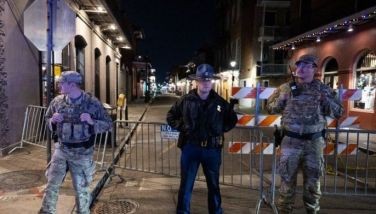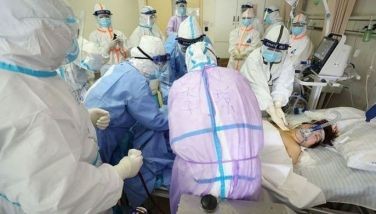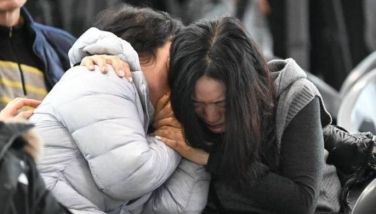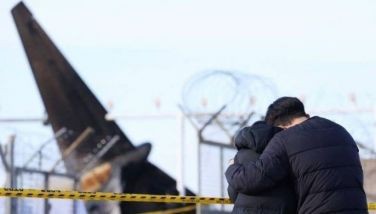Race to find survivors after deadly Japan quake, landslides
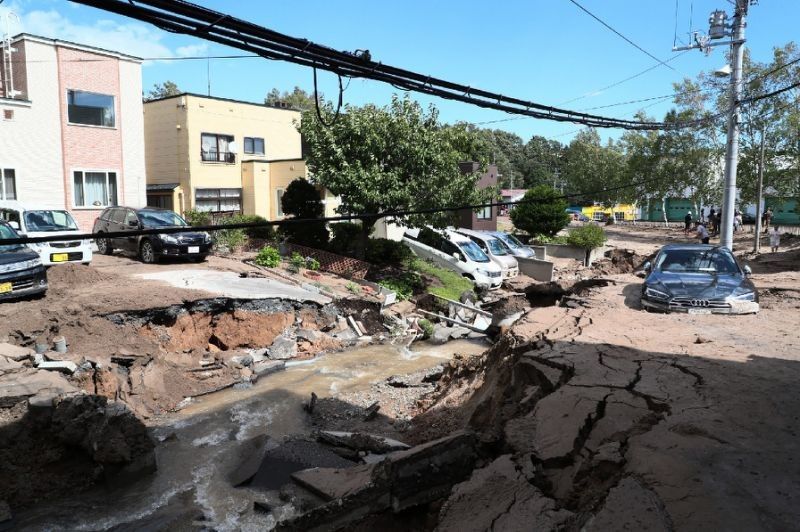
Tokyo - Rescuers scrabbled through mud for survivors yesterday after a powerful earthquake sent hillsides crashing down onto homes in Japan, killing at least 11 people and leaving dozens missing.
As many as 30 people are feared buried beneath the earth and rubble of multiple, large-scale landslides that struck sparsely populated countryside on the northern island of Hokkaido after a 6.6-magnitude earthquake.
Aerial footage showed wrecked farm buildings at the bottom of a hill as rescue helicopters whirred overhead in a region already affected by the edge of a strong typhoon that ravaged parts of Japan earlier in the week.
The quake left almost three million people without power after damage to a major thermal plant supplying the region, with Industry Minister Hiroshige Seko saying it could take "at least a week" for supply to be restored.
Long lines formed outside petrol stations and supermarkets as residents dug in and authorities warned that further quakes could be on the way.
Kazuo Kibayashi, an official in hard-hit Abira town, told AFP: "There was a sudden, extreme jolt. I felt it went sideways, not up-and-down, for about two to three minutes."
"It stopped before shaking started again. I felt it came in two waves. I am 51, and I have never experienced anything like this. I thought my house was going to collapse. Everything inside my house was all jumbled up. I didn't have time to even start cleaning," he added.
Public broadcaster NHK reported that 11 people had lost their lives, many of them in the village of Atsuma, where the landslide engulfed their homes. Thirty-two people were still missing, according to the broadcaster, with around 300 sustaining minor injuries.
Atsuma mayor Shoichiro Miyasaka vowed that rescuers would work "through the night" in an effort to find survivors.
Moments after the initial quake, which struck 62 kilometres (39 miles) southeast of the regional capital Sapporo, an aftershock measuring 5.3 rocked the area, with dozens more tremors felt throughout the day.
"We will do our best to save lives," Prime Minister Shinzo Abe said after an emergency cabinet meeting.
Government spokesman Yoshihide Suga added: "I urge people in areas shaken by strong quakes to stay calm, pay attention to evacuation information... and help each other."
"It's going to rain (in Hokkaido). Please be very careful of further landslides," the spokesman warned.
Around 20,000 rescue workers, including police and members of the Self-Defence Forces were responding to the disaster, Suga said. Another 20,000 troops are expected to join the effort.
Japan is still recovering from its worst typhoon in 25 years, which struck the western part of the country on Tuesday, claiming at least 11 lives and causing major damage to an important airport.
- 'Large quakes often occur' -
The quake also caused major transport disruption with all flights cancelled from Sapporo's main Chitose airport, where the shaking brought down part of a ceiling and burst a water pipe. Local buses and trains, as well as bullet train services were halted.
The Tomari nuclear power plant in Hokkaido, which was not operational before the quake, was forced to turn to emergency back-up power to keep its cooling system working, NHK said.
A friendly football match between Japan and Chile planned for Sapporo was cancelled, with the Japanese FA citing the quake's severe impact on power and transport.
Officials warned of the danger of fresh quakes.
"Large quakes often occur, especially within two to three days (of a big one)," said Toshiyuki Matsumori, in charge of monitoring earthquakes and tsunamis at the meteorological agency.
The risk of housing collapses and landslides had increased, he said, urging residents "to pay full attention to seismic activity and rainfall and not to go into dangerous areas".
And the national meteorological agency warned that more bad weather could be on the way for Hokkaido, asking people to watch out for landslides, high tides and heavy rain.
Japan sits on the Pacific "Ring of Fire" where many of the world's earthquakes and volcanic eruptions are recorded.
In June, a deadly tremor rocked the Osaka region, killing five people and injuring over 350.
On March 11, 2011, a devastating 9.0-magnitude quake struck under the Pacific Ocean, and the resulting tsunami caused widespread damage and claimed thousands of lives.
- Latest
- Trending














